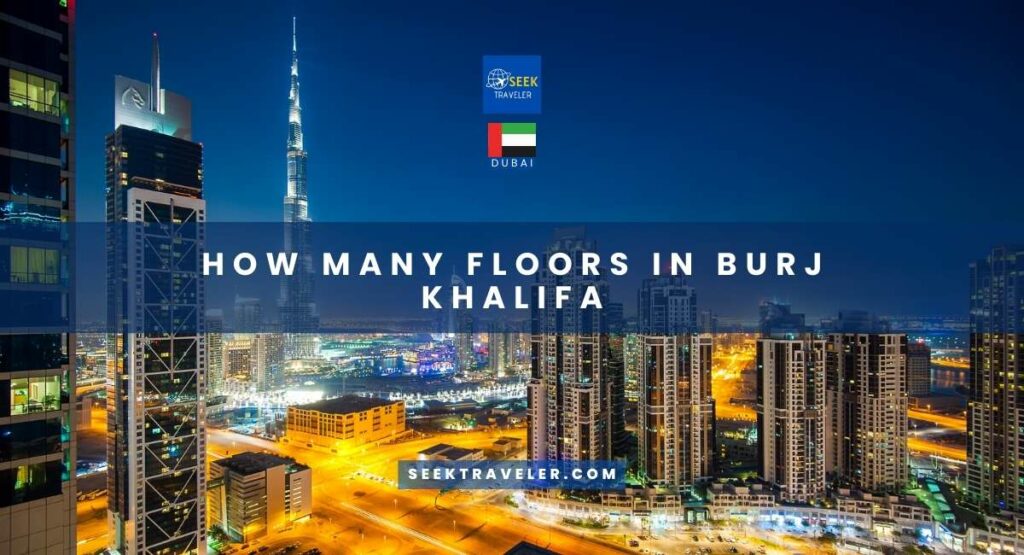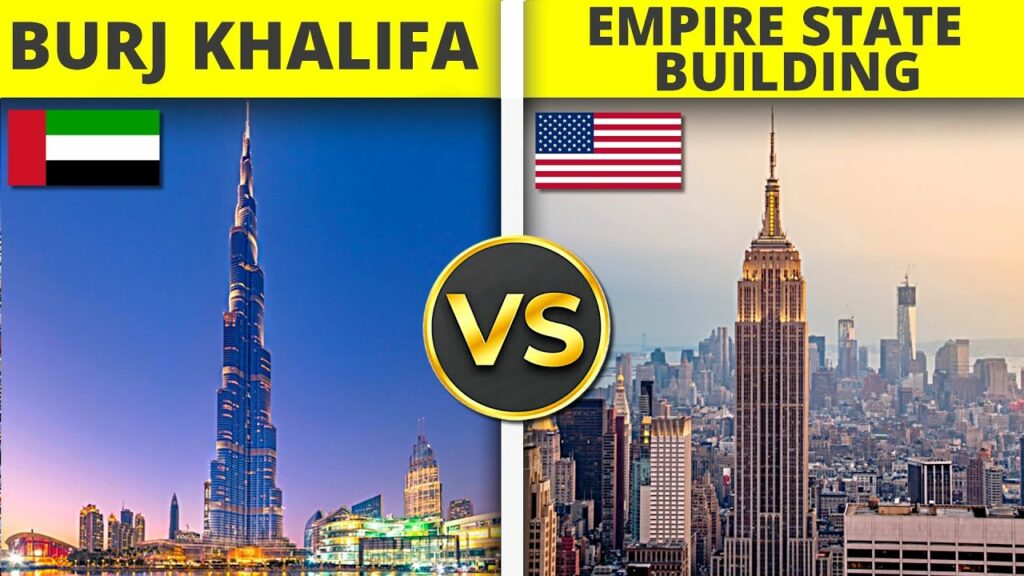I’ve always been fascinated by the Burj Khalifa, the world’s tallest building located in Dubai, United Arab Emirates. It stands at an impressive height of 828 meters (2,716 feet) and is a magnificent feat of engineering and design.
One question that often comes to mind when discussing this iconic structure is how many floors does it actually have? To answer that question, we need to explore the structure of the Burj Khalifa.
Not only is it tall, but it also boasts a unique design with setbacks at various levels, which allows for outdoor terraces on different floors. In addition to this architectural feature, there are also mechanical floors and observation decks scattered throughout the building.
So just how many actual floors make up this towering skyscraper? Let’s dive in and find out!
Understanding the Structure of the Burj Khalifa
You’re about to learn some fascinating details on the intricate design and structure of one of the world’s most iconic skyscrapers – the Burj Khalifa. Standing tall at a height of 828 meters, this masterpiece of modern engineering boasts a unique Y-shaped floor plan that allows it to withstand high winds and minimize sway.
The building is supported by a strong central core made up of reinforced concrete walls, which extends all the way to its foundation. The exterior façade is clad in reflective glass panels and stainless steel spandrels that help reduce heat gain from sunlight.
Additionally, there are several setbacks throughout the building that not only provide outdoor terraces for residents but also help distribute wind loads more evenly across the structure. Now let’s move on to counting the floors!
Counting the Floors
So, I did some research on the Burj Khalifa’s structure and found out that it has a total of 163 floors.
The office section occupies the lower levels, comprising floors 1-39.
Meanwhile, the residential section is from floor 45 to floor 108.
Lastly, the observation deck is located at level 148 and offers a mesmerizing view of Dubai’s skyline.
Number of Floors in the Office Section
You can imagine the feeling of looking up at a tower that seems to touch the sky, wondering how high it goes. Well, let me tell you, in the Office Section of this magnificent structure, there are enough floors to make your head spin.
The Burj Khalifa’s office section occupies the lower part of the building and consists of 19 low-rise office floors. These floors offer panoramic views of Dubai and house offices for multinational corporations.
In addition to these 19 floors, there are also two mechanical equipment levels above them that are used for maintenance purposes. So in total, if we only consider the office section, there are 21 floors (19 office levels + 2 mechanical equipment levels) in the Burj Khalifa.
However, this is just a small part of what makes this building so impressive – keep reading to find out more about how many floors are in the residential section!
Number of Floors in the Residential Section
The residential section of the iconic tower boasts an impressive number of levels that offer luxurious living spaces and breathtaking views. Standing at a height of 828 meters, the Burj Khalifa has 163 floors in total.
Out of these floors, from level 19 to 108, are designated for residential purposes. The residential area features one to four-bedroom apartments, lavish penthouses, and spacious duplexes with top-notch amenities and services. Each unit is designed with elegance and sophistication that reflects the modern Arab culture.
With floor-to-ceiling windows, residents can enjoy panoramic views of Dubai’s skyline and The Palm Jumeirah Island. The high-end finishes and materials used in constructing this section make it one of the most sought-after addresses in Dubai.
From here, we move on to explore the observation deck segment which adds another feather to this architectural marvel’s cap.
Number of Floors in the Observation Deck
At a dizzying height of 555 meters, the observation deck of the iconic Burj Khalifa tower offers visitors a breathtaking view of Dubai’s skyline, juxtaposing the luxurious residential section.
The observation deck is located on the 148th floor and holds the record for being the highest outdoor observation deck in the world.
Visitors can enjoy panoramic views from all sides of Dubai, including sights like Palm Jumeirah, Dubai Marina, and Emirates Palace.
The viewing experience includes an interactive journey through various aspects of Dubai’s history and culture.
From traditional music to modern-day innovations, visitors can learn about the city’s past, present and future while taking in its stunning views.
With this unique blend of entertainment and education at such incredible heights, it’s no wonder that so many people flock to visit Burj Khalifa’s observation deck every year.
And speaking of heights…
Record-breaking Height
Feeling small yet? The Burj Khalifa is a record-breaking height that towers over the rest of Dubai’s skyline. Standing at 828 meters tall, it surpasses any other building in height by a significant margin.
It’s hard to imagine how such an engineering marvel was even possible. It took six years to complete the construction of the Burj Khalifa, but its design and construction challenges were worth it. The foundation alone required over 45,000 cubic meters of concrete and 192 piles drilled to depths of over 50 meters.
Its tapered shape allowed for optimal wind resistance, while its unique Y-shaped floor plan provided maximum living space on each level. Despite all these feats, the Burj Khalifa remains much more than just an architectural wonder; it has become a symbol for Dubai’s progress and ambition in becoming one of the world’s leading cities.
Design and Construction Challenges
You might be surprised to learn about the numerous obstacles that architects and builders faced during the design and construction of the Burj Khalifa. The building stands at a height of 828 meters, making it the tallest in the world. However, achieving such a feat was not easy.
To begin with, engineers had to find a way to support the weight of such a massive structure on a relatively small plot of land. In addition to this, they also had to contend with extreme weather conditions in Dubai, including high winds and scorching temperatures.
They were able to overcome these challenges by using advanced technology and innovative techniques. For instance, they employed a unique structural system made up of steel cables and concrete-filled metal pipes that enabled them to distribute the weight evenly across the building’s foundation. As we can see from these struggles, there is much more behind the Burj Khalifa than just its impressive height.
The legacy of the Burj Khalifa is one that will endure for centuries to come. From its awe-inspiring architecture and breathtaking views from its observation deck to its functional sustainability features like energy-efficient lighting systems and water conservation measures, it represents an unparalleled achievement in human engineering and innovation. Despite all the obstacles faced during its construction, it stands as testament not only to human creativity but also our ability to push beyond limits previously thought impossible.
Legacy of the Burj Khalifa
As I gaze upon the shimmering skyline of Dubai, my eyes are inevitably drawn to the towering pinnacle that stands as a symbol of human innovation and progress. The Burj Khalifa is a monument to our ability to reach for the stars and achieve greatness beyond our wildest dreams.
The legacy of the Burj Khalifa is one of inspiration and awe. Its sheer size and complexity have pushed the boundaries of what we thought was possible in architecture and engineering. As visitors from around the world flock to see this wonder, they’re filled with a sense of wonder and amazement at what humanity can accomplish when we set our minds to it.
The Burj Khalifa will undoubtedly continue to inspire future generations to dream big and strive towards achieving their goals, no matter how lofty they may seem.
Conclusion
Well, it turns out that the Burj Khalifa has a whopping 163 floors!
I find it ironic how this towering structure was built in a region known for its flat terrain. It’s almost as if the architects and engineers wanted to challenge nature itself by creating something so tall and majestic.
But beyond its impressive height, the Burj Khalifa represents human ingenuity and perseverance. Its construction wasn’t an easy feat, with challenges ranging from extreme temperatures to high winds. Yet, despite these obstacles, we were able to create something truly remarkable.
The legacy of the Burj Khalifa will continue to inspire future generations of architects and engineers who strive to push boundaries and reach new heights.

Meet Scott Robinson, a seasoned traveler with 28 countries under his belt, has immersed himself in diverse cultures around the world. His articles are a window into the rich tapestry of traditions, customs, and local flavors he has encountered on his globetrotting escapades. Scott’s deep appreciation for the beauty of cultural diversity shines through his writing, allowing you to embark on a virtual journey that celebrates the vibrant mosaic of humanity.



